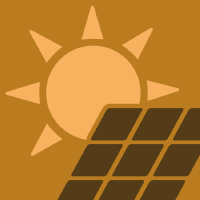Topic Menu
► Topic MenuTopic Editors


Innovative Materials for Energy Conversion and Storage
Topic Information
Dear Colleagues,
To meet the sustainable development goals, great efforts have been devoted to developing clean energy conversion and storage systems across the globe. Material innovation is a vital part of achieving high-efficiency energy conversion and storage. Today, many effective optimization methods have been applied to material innovation, and some important progress has been made in the research for energy conversion and storage materials. However, there are still many common challenges to realizing high-efficiency energy conversion and storage, including materials’ structure design, the REDOX mechanism in energy conversion and storage, the behavior of charge transport, and so on. Thus, this topic invites innovative articles on diverse aspects of energy conversion and storage materials, which include but are not limited to:
- Innovative Materials for Lithium/Sodium Ion Batteries;
- Innovative Materials for Metal-Air Batteries;
- Innovative Materials for Supercapacitors;
- Innovative Materials for Fuel Cells;
- Innovative Materials for Water Splitting;
- Innovative Materials for CO2 Reduction Reaction;
- Innovative Materials for Nitrogen Reduction Reaction;
- Innovative Materials for Biology Energy.
All types of manuscripts (original research, reviews, short communications) are welcome.
Prof. Dr. Shengchun Yang
Dr. Bin Wang
Dr. Hairui Cai
Topic Editors
Keywords
- sustainable development
- energy conversion and storage
- innovative materials
- lithium/sodium ion batteries
- metal-air batteries
- supercapacitors
- fuel cells
- water splitting
- CO2 reduction reaction
- nitrogen reduction reaction
- biology energy
Participating Journals
| Journal Name | Impact Factor | CiteScore | Launched Year | First Decision (median) | APC |
|---|---|---|---|---|---|

Applied Sciences
|
2.5 | 5.5 | 2011 | 19.8 Days | CHF 2400 |

Energies
|
3.2 | 7.3 | 2008 | 16.2 Days | CHF 2600 |

Materials
|
3.2 | 6.4 | 2008 | 15.2 Days | CHF 2600 |

Solar
|
- | 4.3 | 2021 | 21.3 Days | CHF 1000 |

Nanomaterials
|
4.3 | 9.2 | 2010 | 15.4 Days | CHF 2400 |

Preprints.org is a multidisciplinary platform offering a preprint service designed to facilitate the early sharing of your research. It supports and empowers your research journey from the very beginning.
MDPI Topics is collaborating with Preprints.org and has established a direct connection between MDPI journals and the platform. Authors are encouraged to take advantage of this opportunity by posting their preprints at Preprints.org prior to publication:
- Share your research immediately: disseminate your ideas prior to publication and establish priority for your work.
- Safeguard your intellectual contribution: Protect your ideas with a time-stamped preprint that serves as proof of your research timeline.
- Boost visibility and impact: Increase the reach and influence of your research by making it accessible to a global audience.
- Gain early feedback: Receive valuable input and insights from peers before submitting to a journal.
- Ensure broad indexing: Web of Science (Preprint Citation Index), Google Scholar, Crossref, SHARE, PrePubMed, Scilit and Europe PMC.


